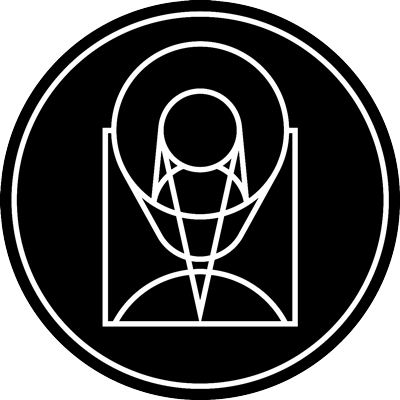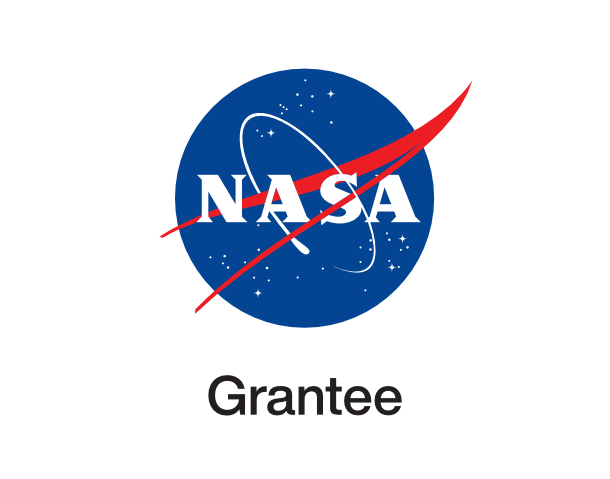A very hungry planet

eso_potw2534a August 26th, 2025
Credit: ESO/R. F. van Capelleveen et al.
What appears to be a ripple in space, is today’s Picture of the Week depicting a newborn planet eating its way through its dusty cradle as it orbits its host star. This image, taken with ESO’s Very Large Telescope (VLT) in Chile, is the first clear detection of a baby planet in a disc with multiple rings. These so-called protoplanetary discs surround young stars and appear as disc-shaped structures of gas and dust, often with rings like the one in this image. They are the birthplace of planets, and the rings are thought to indicate the presence of (hungry) planets in the disc. Initially, little particles in the spinning disc begin to accumulate and grow as gravity takes over, stealing more material from the native disc until they evolve into embryo planets. The clear detection of the planet WISPIT 2b in this image is an important step forward in our understanding of how planets form. It’s about 5 times the mass of Jupiter, and its host star is a younger version of our Sun. It also reinforces the idea that gaps can be created by newly formed planets — a prediction only made in theory that has now been verified observationally. While looking for stars hosting young planets, the team of researchers were lucky enough to find a planet so young that is still embedded in its birth disc. This discovery was published in a paper led by Richelle van Capelleveen at the University of Leiden, Netherlands, in collaboration with an international team of astronomers from the University of Galway and the University of Arizona. It was made possible through the precise observations of the planet-hunting SPHERE instrument on the VLT. SPHERE blocks the light of the central star and corrects atmospheric turbulence with adaptive optics, delivering crisp images of the surroundings of the star. The University of Arizona's MagAO-X AO system on the 6.5m Magellan telescope in Chile detected hydrogen gas falling onto the planet, confirming that it is accreting matter from its surroundings. Further observations of this system might reveal new insights about how our own Solar System may have looked in its early days. Links VLT paper by R. F. van Capelleveen et al., accepted for publication in Astrophysical Journal Letters. Magellan paper by L. M. Close, accepted for publication in Astrophysical Journal Letters.
Provider: European Southern Observatory
Image Source: https://www.eso.org/public/images/potw2534a/
Curator: European Southern Observatory, Garching bei München, None, Germany
Image Use Policy: Creative Commons Attribution 4.0 International License

- ID
- potw2534a
- Subject Category
- B.3.7.2.1
- Subject Name
- WISPIT 2b
- Credits
- ESO/R. F. van Capelleveen et al.
- Release Date
- 2025-08-26T12:00:00
- Lightyears
- Redshift
- Reference Url
- https://www.eso.org/public/images/potw2534a/
- Type
- Observation
- Image Quality
- Distance Notes
- Facility
- None, None, None
- Instrument
- None, None, None
- Color Assignment
- Band
- Bandpass
- H, H + Ks, Ks
- Central Wavelength
- 1625, 1900, 2182
- Start Time
- Integration Time
- Dataset ID
- None, None, None
- Notes
- Coordinate Frame
- ICRS
- Equinox
- J2000
- Reference Value
- 290.820958333, -7.68196389
- Reference Dimension
- 2044.0, 2040.0
- Reference Pixel
- 1022.5, 1020.5
- Scale
- -8.9e-07, 8.9e-07
- Rotation
- 0
- Coordinate System Projection:
- TAN
- Quality
- Full
- FITS Header
- Notes
- Creator (Curator)
- European Southern Observatory
- URL
- https://www.eso.org
- Name
- Telephone
- Address
- Karl-Schwarzschild-Strasse 2
- City
- Garching bei München
- State/Province
- None
- Postal Code
- D-85748
- Country
- Germany
- Rights
- Creative Commons Attribution 4.0 International License
- Publisher
- European Southern Observatory
- Publisher ID
- eso
- Resource ID
- potw2534a
- Resource URL
- https://www.eso.org/public/archives/images/original/potw2534a.tif
- Related Resources
- Metadata Date
- 2025-08-20T09:41:17+02:00
- Metadata Version
- 1.1
Detailed color mapping information coming soon...









